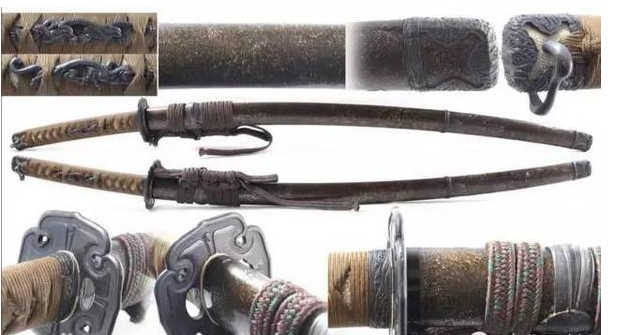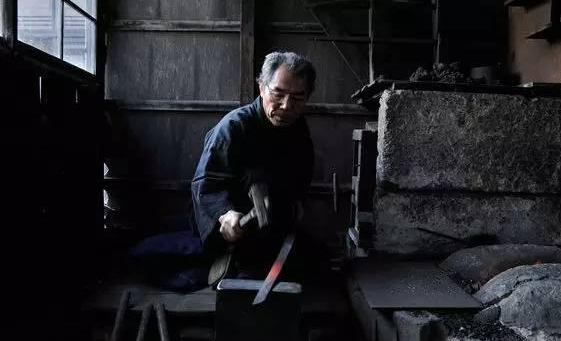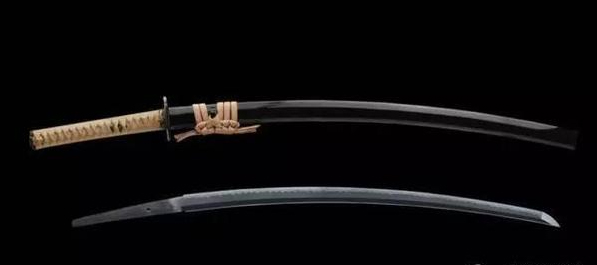How to choose a Japanese sword that suits you?

In the Edo period, there were so-called inscriptions on the property in the order of sharpness. But it is important to know that as long as the blade is made through the folding and forging process, whether it is the top or the middle or the bottom, the taste is actually not as different as imagined, and the difference will not be too great.
In his lifetime, Nakamura tried about 200 swords from various eras. Taking the handles of about 2 feet 4 inches as the benchmark, after the experience of True Sword Slash, a total of ten selection methods are summarized as follows:
1. If the blade is 2 feet 4 inches, the blade length should be 3 feet 2 inches. That is, the handle should account for 1/4 of the length, and 3/4 of the length is Tsuba and Saya.
2. If the Handle length is 8 inches, the blade should be around 7 inches. The thickness of the blade will also affect the specific gravity and balance of the blade.
3. The width of the blade "measured from the top of the blade" shall not exceed 3.5 cm, and the front width of the object shall be within 3 cm (about 8 minutes 5%).

4. The weight of the blade "thickness measured from the top of the blade" is about 0.6 cm. The first weight of the object should be within 0.5 cm, and it must not be as thick as the weight. If the thickness is the same, for example, a new sword with wide text is good for combat, but it will affect the sharpness of the cutting. Basically, it needs a body match like the old sword period and the retro new sword to cut the taste well.
5. The thicker sword with the pickaxe is very effective for cutting hard objects (such as pockets, antlers, frash bamboo, etc.), but because it will suck (stuck) the softer tissues of the target to be cut, when it is replaced with grass, it will be cut. It will become worse. The sword with a thinner pickaxe, with a general body size as described above, will taste very well for all kinds of test targets. However, if the technique is not good and the angle is wrong, the blade may bend when it hits the target on the side of the blade. There is no doubt that the thickness of the pickaxe affects the flexibility of the blade.
6. If the blade has a groove (blood groove), it will make a sound of rubbing air when it is cut. This sound is really wise, some people hate it and others like it, and almost everyone in the cut is using a sword without a sword. In fact, the presence or absence of opening does not affect the cutting taste, but it is related to the weight balance and flexibility of the blade. Opening it too deep will affect the strength of the blade, but the sound becomes louder and better-looking, and the practicality will decrease accordingly.

7. After removing all the saya from the blade, the naked weight is about 800 grams. Those who exceed it are not conducive to sword forging.
8. The blade hanmon is preferably about 1/4 of the blade width. The blade with too large hanmon (excessive high temperature quenching) will make the blade brittle and break easily, and the cutting taste will also be bad. For the blade pattern of a utility sword, it is recommended to abandon the gorgeous large chaotic blade and replace it with a medium straight blade (the quenching is shallower), and the cutting taste will be better.
9. There are two holes for nail holes on the root and handle of the sword, and it is safer to install two nail holes. Single-head nails are practically dangerous.
10. Practical sword length is ideal between 2 feet 2 inches and 2 feet 4 inches. Swords larger than 2 feet 5 inches will cause angle deviation within the hand (hand strength), and insufficient strength will cause the blade to bend or get stuck. The grass swept forward and retreat.
In the part of the sword, now many people in Hedao prefer the angled shape of the handle of the "Tianzhengyu". However, the grip of True Sword is that the right palm is a little bit away from the tsuba, the left palm is full of the lower end of the hilt, and the little finger is clasped at the upper bottom. Therefore, the "Higo" with a round crown is more suitable for real sword cutting.

Eighty to ninety percent of the real swords in the hands of my friends are pre-made, rather than tailor-made according to the owner's request. In terms of specific gravity, length, etc., there are very few real swords that fully meet the requirements of the sword owner. Therefore, it is necessary to make a small modification of the sword on the opponent.
1. If you feel the weight of the sword is biased towards the object hitting and cutting the first place, modify the sword handle. Putting a lead block between the blade and the crown will change the weight balance.
2. When the blade is too long, grind up the "step" covered by the blade to shorten it. This is called "区送り". When the root of the knife is too short, use the same method to change the length.
3. If you feel the blade is too heavy, you can dig a blood ditch to reduce weight.
Finally, Nakamura believes that today, the swordsmith always loves to make long swords and the claytempered is too gorgeous. It is like a Chinese Qiang that can only be used for appreciation. There are very few people who can really use it for real sword cutting. Focusing on beautiful, heavy and long sword, it is not only difficult for ordinary people to lift it up, but also difficult to cut off. Not only will it affect the speed, the cut taste will also be cut in half. It is important to know that lightness, sturdiness, elasticity, and sharpness are the absolute factors that make the Japanese sword energy long-lasting.
Want a unique sword? Feel free to contact us:
Phone: 086 13739276006
Email: [email protected]
Website: www.hanbonforge.com
Custom Sword Page: www.hanbonforge.com/CUSTOM-SWORDS/Custom-Your-Own-Swords

1 Comment(s)
Can a sword be made with a blade length of about 2.1 shaku (25.5 inches)?Can the tsuka (handle) be 9"?
Thank you!
Leave a Comment